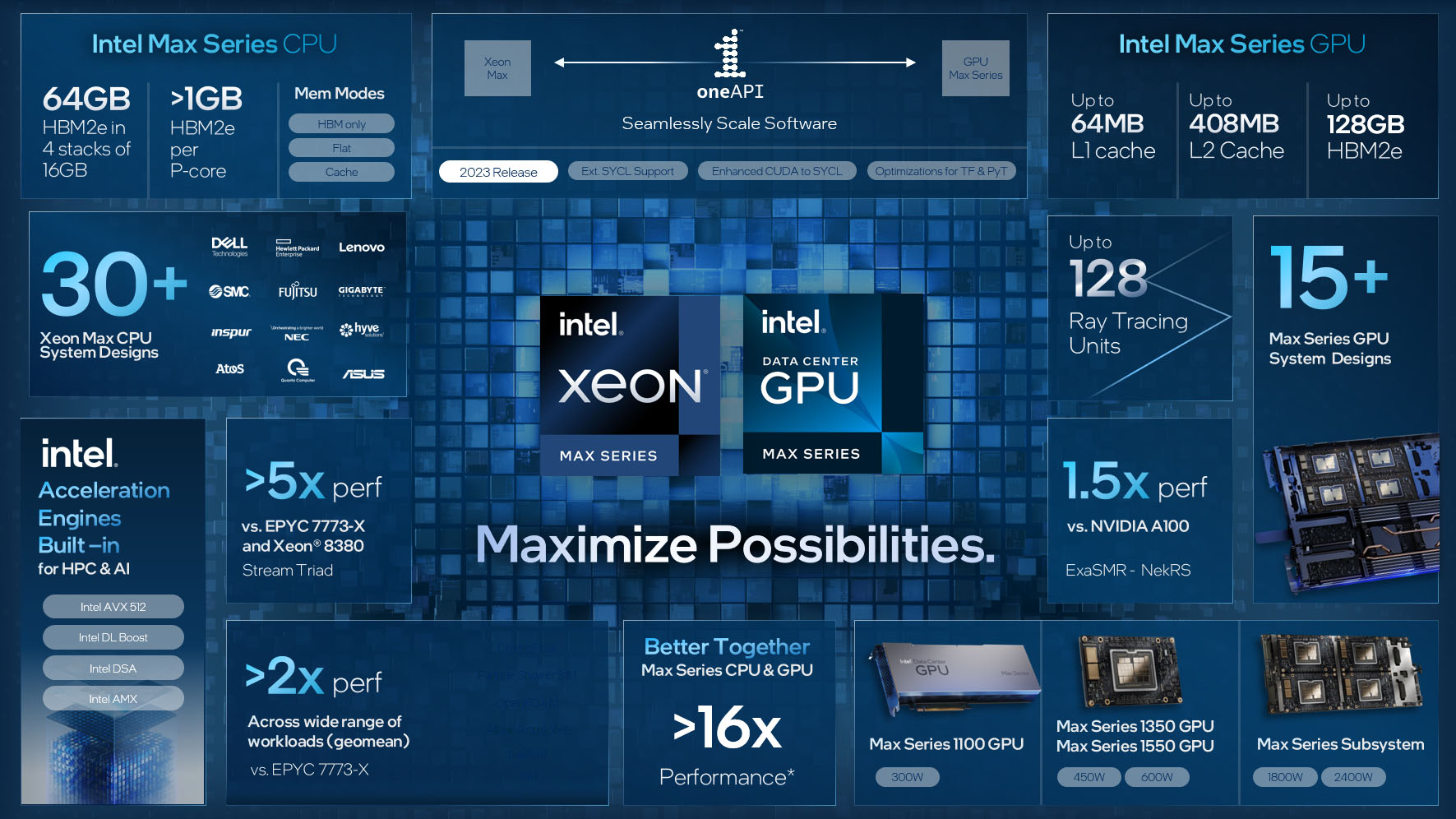Intel has finally unveiled its long-awaited Sapphire Rapids update to the Xeon CPU family, alongside the company’s new data center GPU.
Both are now available in Max Series form, and will soon be installed in prominent supercomputers, such as the Argonne National Laboratory’s Aurora.
“To ensure no [high performance computing] HPC workload is left behind, we need a solution that maximizes bandwidth, maximizes compute, maximizes developer productivity and ultimately maximizes impact,” explained Jeff McVeigh, VP of Intel’s Super Compute Group.
Intel Xeon Max Series
In a press release (opens in new tab) on the company’s website, Intel explains that such supercomputers play a crucial role in some of the world’s largest scientific and societal challenges, “from mitigating the impacts of climate change to curing the world’s deadliest diseases.”
As such, the latest chips have received a huge boost all-round. The Max Series GPU is the company’s highest density processor, now offering up to 128GB of high bandwidth memory in the form of over 100 billion transistors in a 128-core, 47-tile package.
The latest GPUs will be available in three forms: Max Series 1100 GPU, 1350 GPU, and 1550 GPU, each with 48GB, 96GB, and 128GB of memory respectively.
On a similar note, the 350W Xeon Max CPU contains 64GB of high bandwidth memory across its four-tile setup with up to 56 performance cores based on the same Golden Cove microarchitecture features as Intel’s 12th-Gen Core CPUs.
The new hardware will support DDR5, PCIe 5.0 and Compute Express Link (CXL) 1.1, which will enable memory to be directly attached to the CPU over PCIe 5.0.
McVeigh acknowledged the delays that the company’s new supercomputing components had faced, noting that, “We’re always going to be pushing the envelope. Sometimes that causes us to maybe not achieve it, but we’re doing that in service of helping our developers, helping the ecosystem to help solve [the world’s] biggest challenges”.
Intel now forecasts production of the Xeon CPU and Data Center GPU Max Series in early 2023, when it will commence deliveries to Argonne, Los Alamos National Laboratories, Kyoto University and other supercomputing sites.





